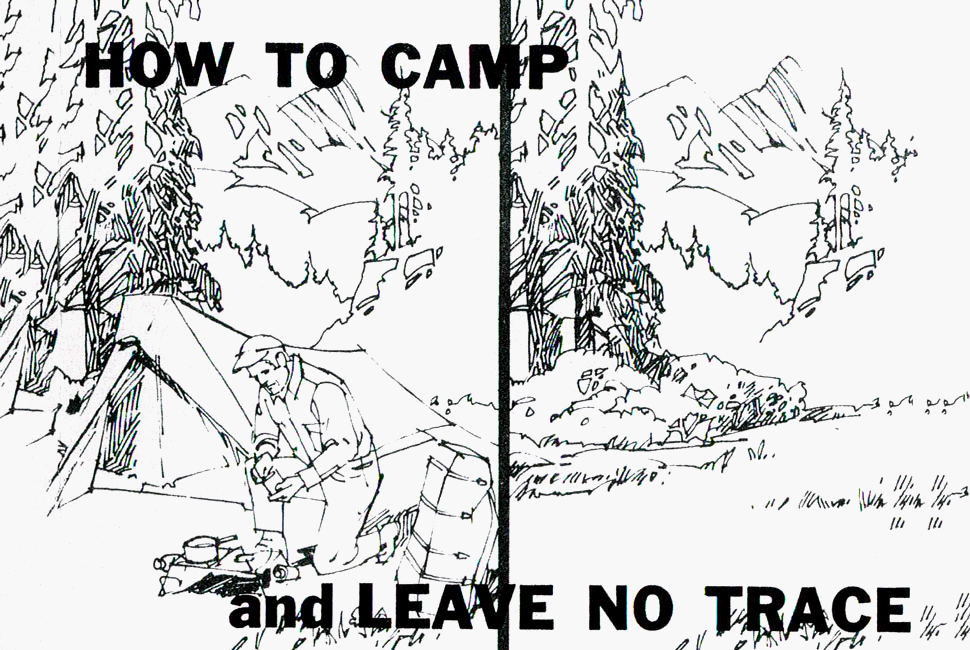Carry in Carry Out—The Denial of Residue
Residue
by Gregory Cartelli, M.E.D., ’17
In the 1970s, the United States began a series of educational efforts under the title of Leave No Trace. This program followed successful precedents, Tread Lightly and Smokey the Bear, educating the population on the effects their actions on the natural environment. This change in tone, from the pre-WWII outdoor culture of woodcraft, hunting, and living off the land (itself a response to the threat of the automobile to America’s wilderness) marked a recognition of overuse at multiple scales, from human to mechanical and from individual to collective. However, the principles established by the new program address impact and use on an immediate and localized scale, effectively erasing the perception of the present as an historical product. Attempting to negotiate the tension between present use and preservation, Leave No Trace unintentionally illuminates the unique temporal quality of residue and opens up the possibility to engage with it in an immediate present.
Looking at three of eight original principles, Leave No Trace, codified in 1994 and subsequently published in pamphlets and displayed on trailhead billboards (Concentrate Impacts in High Use Areas / Spread Use and Impact in Pristine Areas / Avoid Places Where Impact is Just Beginning), one cannot help imagining a radial city of impact based upon these guiding tenets. This park-side city would be one of localized centers of residue formed by accumulations of caravans, tents, telescoping titanium, 300-fill down jackets, air padded sleeping pads, nylon, polyester, and Gore-Tex. Tendrils of impact would snake out into ‘pristine’ areas formed by organic paths of residue spreading out from high-use areas. But this city need not be a protrusion on the landscape. It could be an excavation, a crater, with impact now indicted as erosion. The sanctity of the landscape could be preserved, if from a distance, with the inverted city only visible at its borders.
These are possibilities only because Leave No Trace does not consider the role of aggregation on impact. There is a distance between use and impact, passively enforced by the language used, which distorts the cause and effect relationship between them. By imagining the ability to spread impact, they allow us to think of an impact camouflage, a moderation of sensation by a matching of intensities, resulting in the creation of a new collective environment that undermines the explicitly singular aspect of their message: the agency of an individual to make a difference. This intent is not strange, nor should it be. For decades, American literature has foregrounded the spiritual significance of an individual’s engagement with the natural world. However, our perception of what use and impact mean is greatly affected when this outlook is codified into rules related to the material reality of residue and waste.
It’s too often that architecture finds itself stuck in this mindset as well—the desire to design a building without due regard for the condition and historicity of the site. What happens then, when this process repeats to the point where the site is lost, and all that remains is a disparate collection of buildings? Here again we could imagine residue emerging, snaking between structures and creating new connections, as the impact of a struggle of use.

A drawing from a government handbook